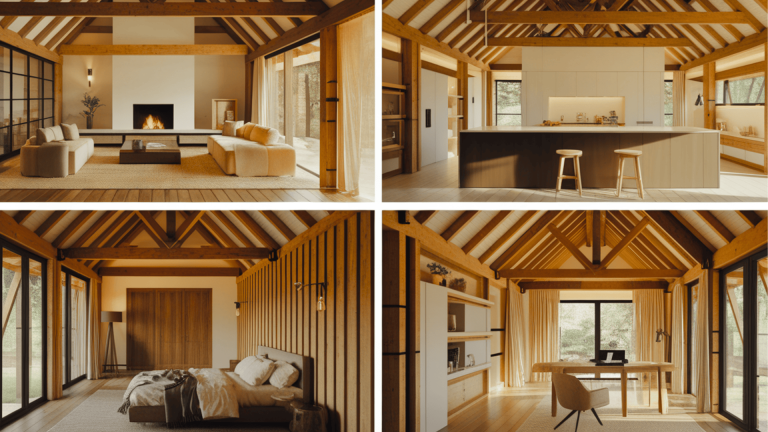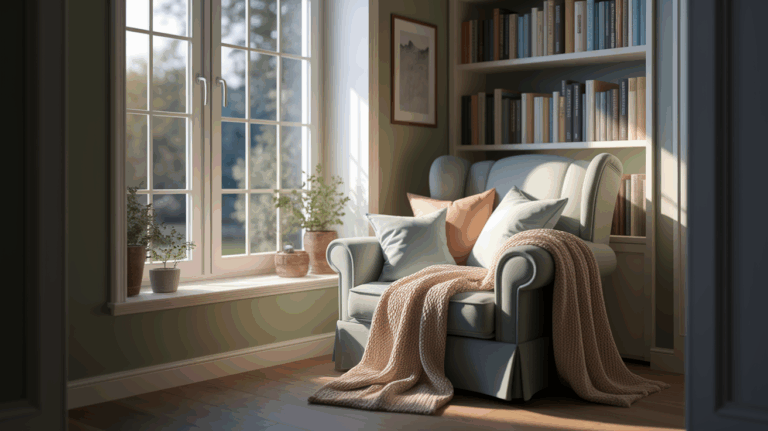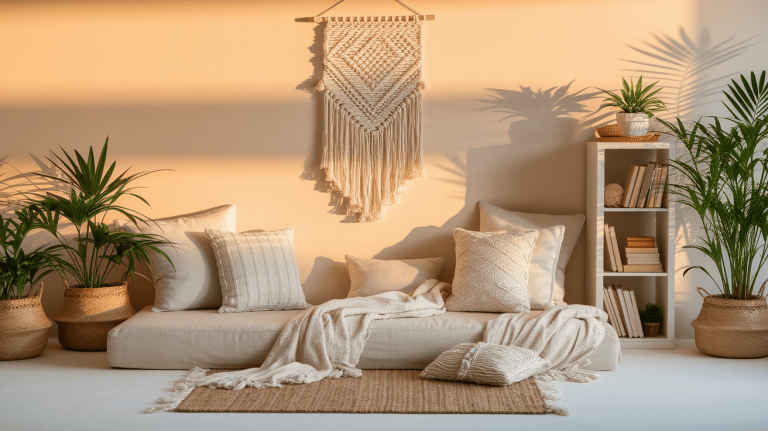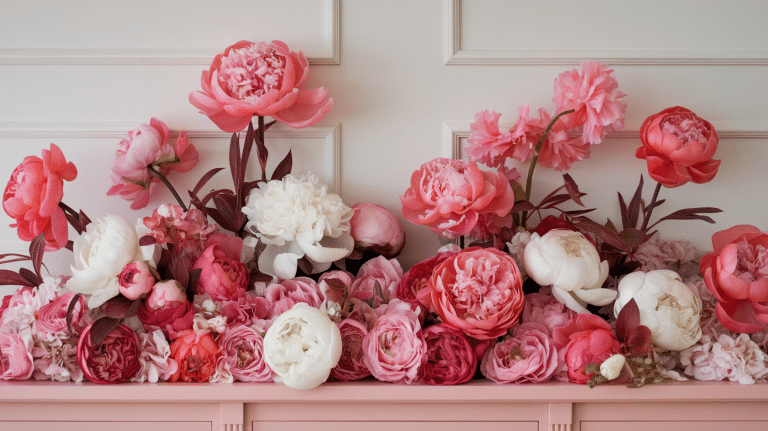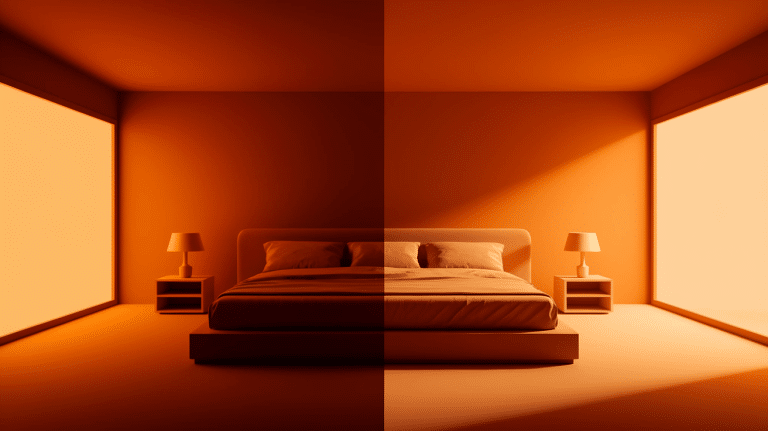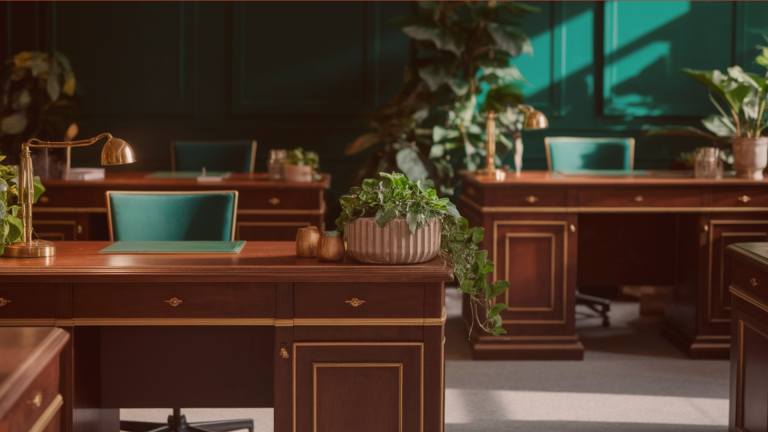How to Add Modern Baroque Interior Design
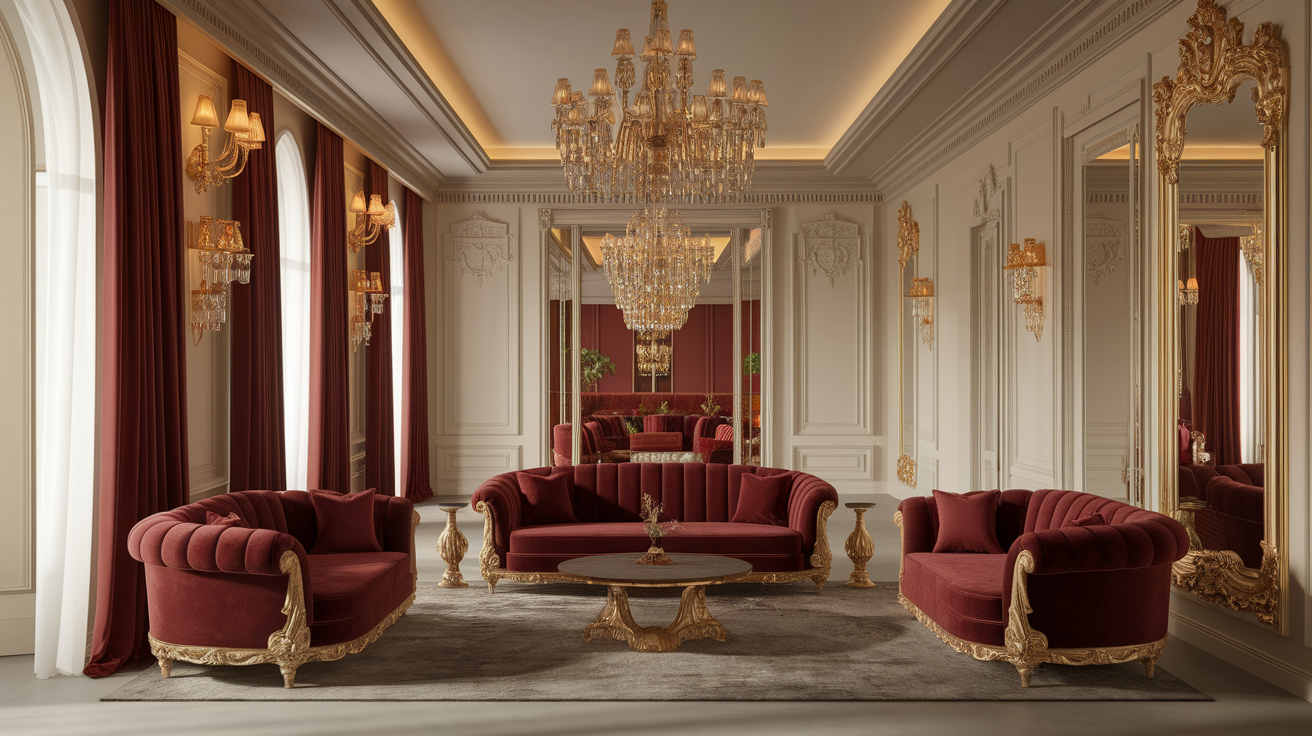
Do you want to add drama and flair to your home? Modern baroque design combines old-world charm with today’s comfort. This style mixes the bold shapes of 17th-century baroque with simple, clean lines that work in contemporary homes.
When you step into a modern baroque space, you notice the mix right away. Curved furniture sits next to straight-lined pieces, and old-style details work with today’s needs.
This mix of old and new creates rooms that feel both grand and lived-in. The style lets you play with bold ideas while keeping things useful. This guide will show you how to bring this look into your home with smart tips.
Understanding Modern Baroque Interior Design
Modern Baroque interior design is a contemporary reinterpretation of the classic Baroque style, which originated in the 17th century and is known for its opulence, intricate details, and dramatic flair.
The modern version blends the grandeur and richness of traditional Baroque with the simplicity and functionality of contemporary design, creating a balance between elaborate decoration and modern minimalism.
Key Elements of Modern Baroque Interior Design
Want to know what makes modern baroque stand out? This blend brings together the past and present in a unique way. The style uses specific elements that anyone can add to their home:
1. Bold Colors and Patterns
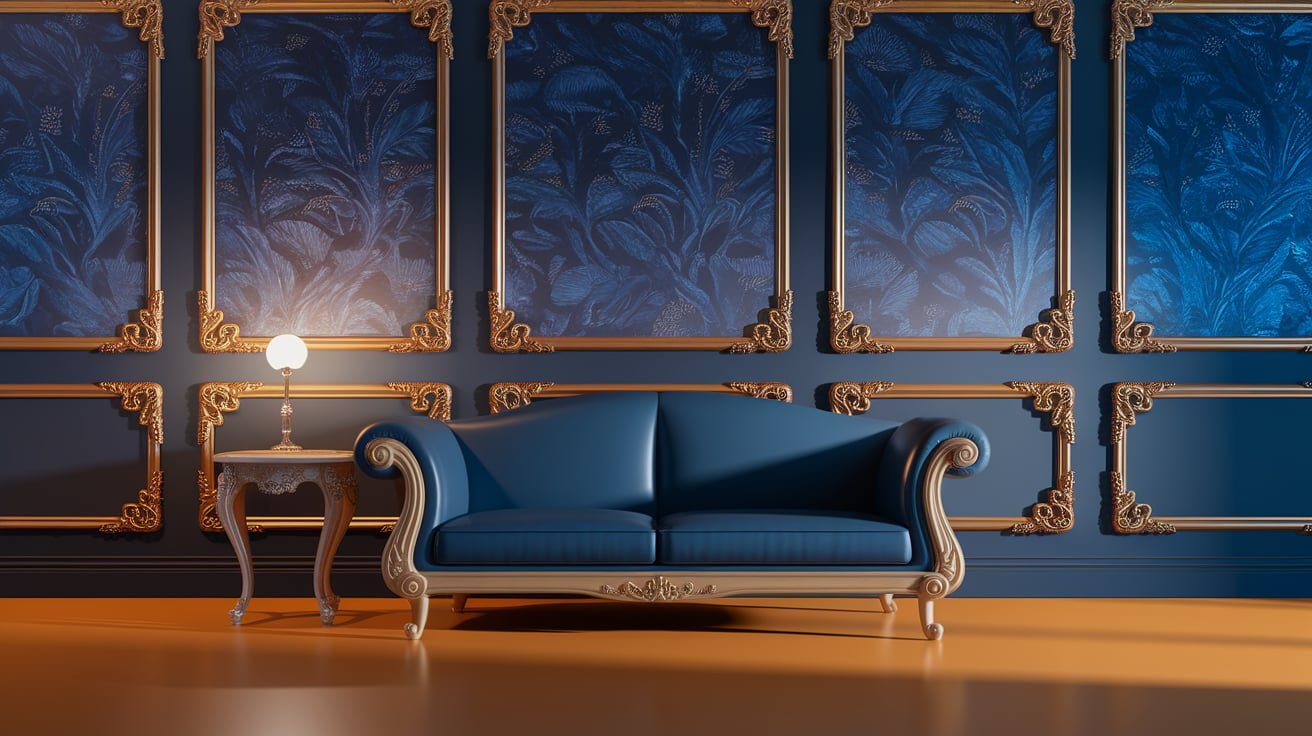
Modern Baroque is based on drama, and that starts with color and pattern. Deep jewel tones like royal blue, emerald green, plum, and gold set the mood. These rich hues bring a sense of luxury, but when used smartly, they don’t overwhelm.
- How to Use It: Try a single accent wall in a rich color or a bold velvet sofa to anchor the space.
- Patterns to Try: Delicate florals, damask prints, and swirling baroque motifs. Use them on cushions, drapes, or wallpaper in small areas to create focus without visual clutter.
Tip: Balance bold colors with neutrals like ivory, grey, or black to let ornate elements shine.
2. Statement Furniture With Classical Touches
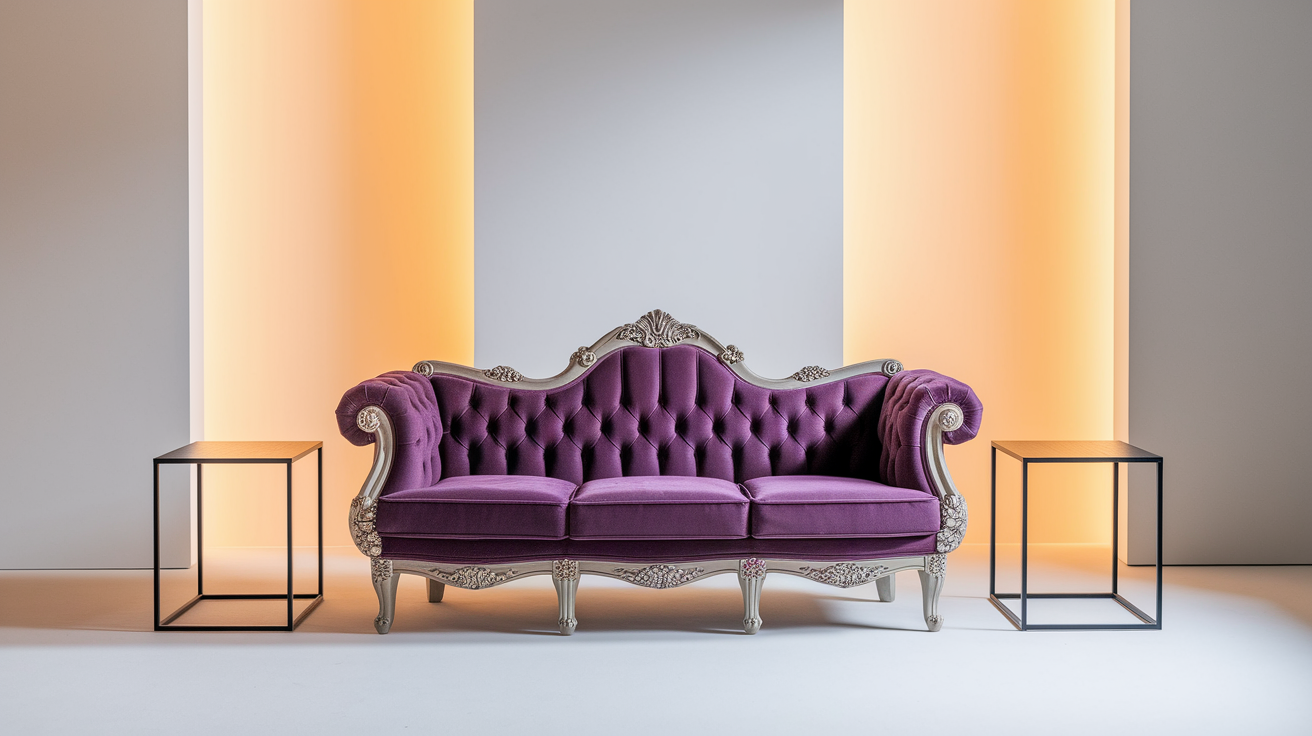
Furniture is where old-world style meets modern lines. Think curved arms, tufted backs, and detailed carving, but with a clean, updated shape.
- Materials: Velvet, leather, or brocade upholstery adds richness.
- Contrast is Key: Pair a rococo-style armchair with a modern metal side table, or a baroque bedframe with minimalist bedding.
Tip: Choose one or two statement pieces per room to avoid a museum-like feel.
3. Mixed Materials for Visual Texture
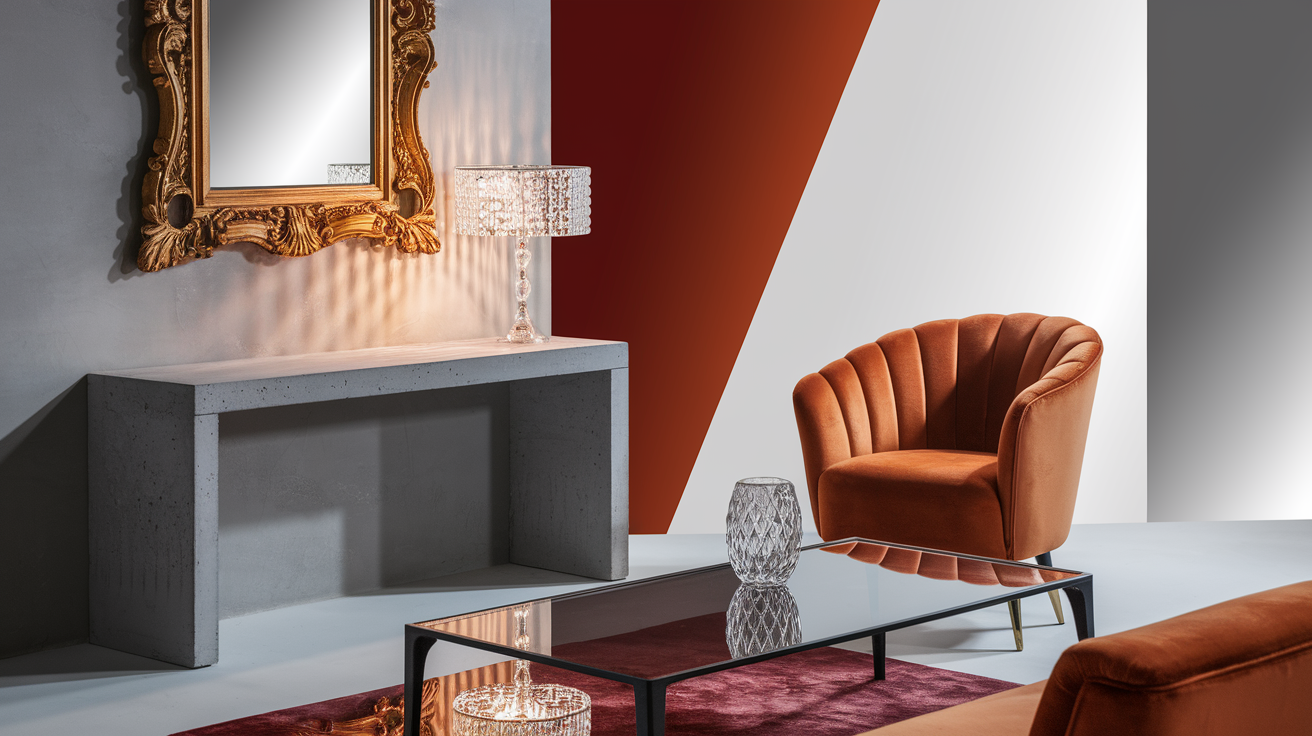
Modern Baroque isn’t afraid to mix and match. This style incorporates contrast in materials to create visual interest.
Successful Combos: Velvet + glass, marble + metal, wood + brass.
Ideas to Try:
- A gold-leaf mirror above a matte black fireplace
- A crystal chandelier above a sleek marble kitchen island
- Glass coffee tables paired with a brocade rug
Tip: Keep finishes consistent (like all warm-toned metals) for harmony.
4. Ornate Details in Measured Doses
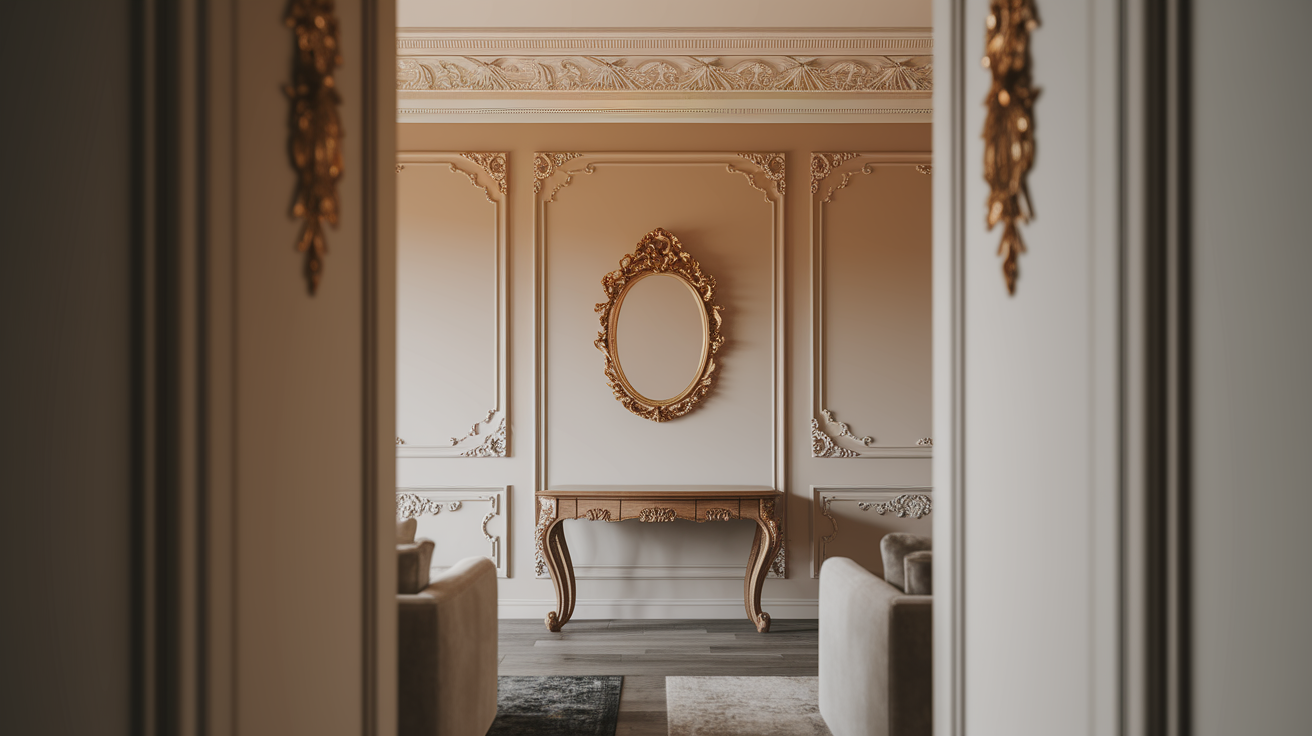
Baroque is known for intricate detailing—carvings, scrolls, and embellishments. In a modern setting, these are best used as accents rather than the main theme.
Examples:
- A carved wood mirror
- Decorative legs on a console table
- A lamp with a sculpted base
Tip: Think of ornate details like jewelry—just enough to increase the look without overwhelming it.
5. Lighting as Art
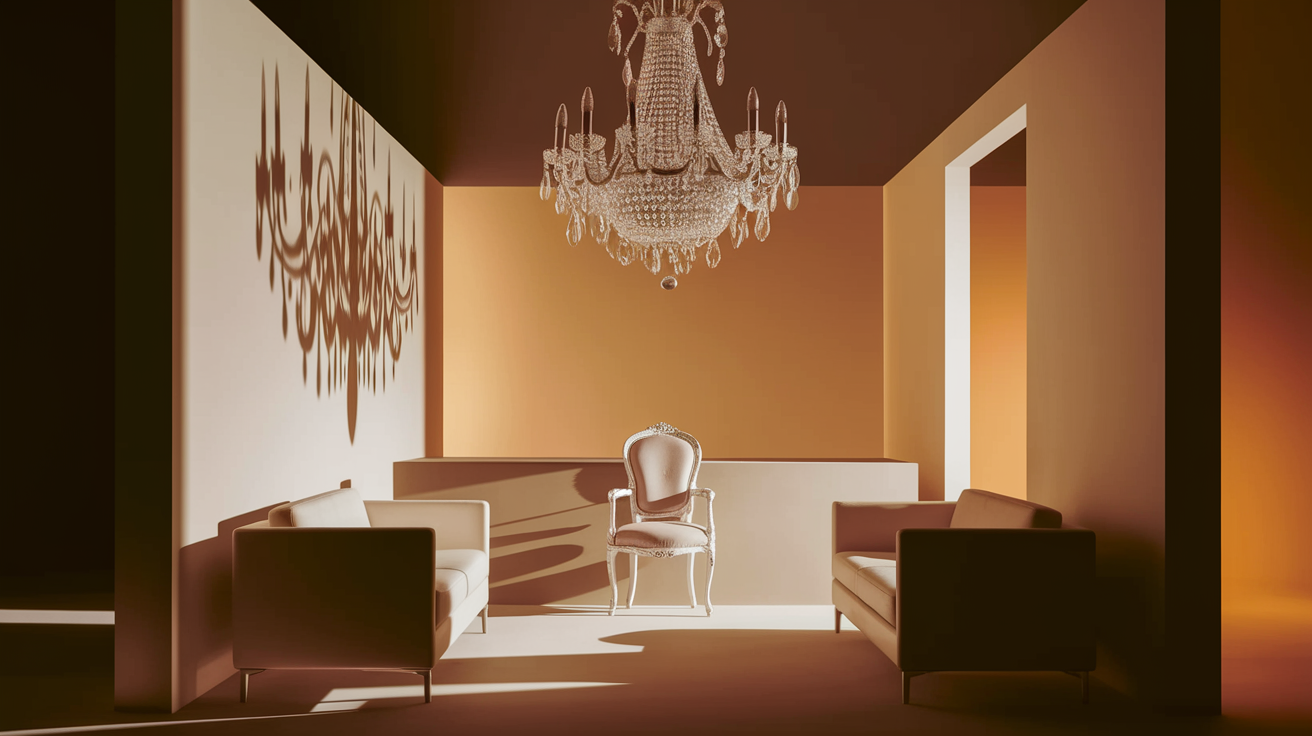
Lighting in Modern Baroque is both functional and sculptural. It sets the mood and acts as a centerpiece.
- Best Choices: Crystal chandeliers, globe pendant lights, or sculptural floor lamps.
- Why It Works: These pieces cast interesting shadows and draw attention upward, creating a sense of height and drama.
Tip: Use dimmers to shift the mood throughout the day—from cozy in the evening to bright and stylish during the day.
6. Extra Touch: Baroque-Inspired Art and Accessories
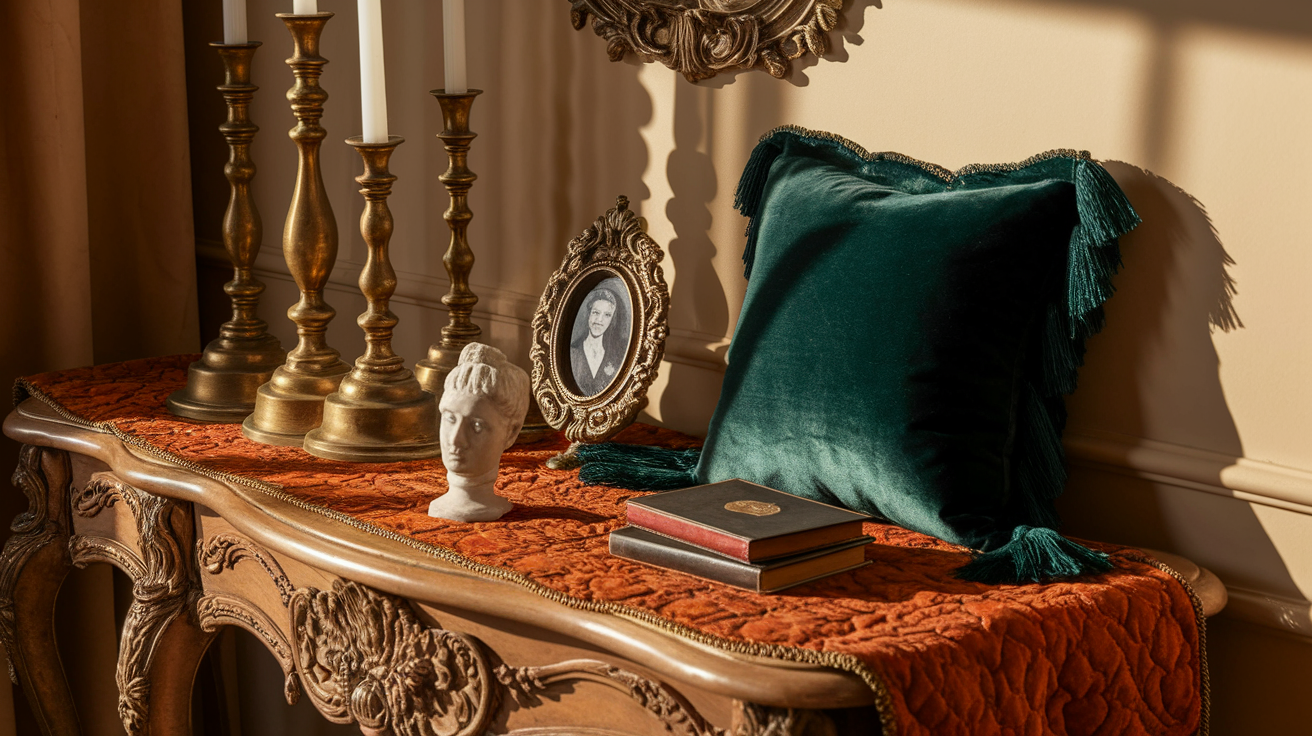
Don’t forget the finishing touches! Art and decor can tie the look together.
- Wall Art: Gilded frames, classical paintings, or modern interpretations of Baroque scenes.
- Accessories: Brass candlesticks, velvet throw pillows, ornate photo frames.
Tip: Group accessories in threes and layer textures to keep things interesting.
Rich Tones With a Contemporary Twist
The color choices in modern baroque design create the perfect balance between old-world luxury and fresh, current appeal. This style deviates from the expected and offers a new take on classic baroque colors.
- Deep Base Colors: Modern baroque starts with deep, rich base colors. Think navy blues, forest greens, and burgundies. These colors add depth to walls and larger furniture pieces, creating a sense of richness without feeling heavy or dated.
- Metallic Accents: Gold and silver tones play a key role in this style. Unlike traditional baroque, which might use these metals everywhere, the modern approach adds them in small doses. A gold-framed mirror or silver lamp base can add just enough shine without going too far.
- Neutral Balancers: Modern baroque includes plenty of neutral tones to keep spaces from feeling too heavy. Creams, soft grays, and taupes help balance the stronger colors.
- Unexpected Color Pops: The addition of unexpected color makes this style feel current. A bright teal cushion on a deep purple chair, a coral vase against a navy wall, these small color surprises bring the whole look into today’s homes.
- Layered Tones: Modern baroque works with layers of similar colors. Rather than stark contrasts, you might see three or four shades of blue working together.
Materials for Modern Baroque Interiors
The magic of modern baroque design lies in its mix of materials, which creates spaces that feel luxurious and comfortable:
| Material | Description | Usage in Modern Baroque |
|---|---|---|
| Velvet and Plush Fabrics | Soft, touchable, adds depth and texture | Sofas, chairs, cushions — pairs with simpler materials for balance |
| Wood with Character | Warm, detailed with grain patterns or carvings | Furniture pieces like tables and chairs, especially in walnut or mahogany |
| Glass and Crystal | Light-reflecting, smooth surfaces | Glass tables, crystal lamps, mirrors — keep spaces airy |
| Metals with Shine | Gold, brass, silver, and bronze accents | Furniture legs, lamp bases, mirror frames, and small decorative objects |
| Stone Selections | Natural patterns, stylish and classic | Marble tabletops, fireplace surrounds, and small accessories |
| Mixed Textural Elements | Contrasts of rough/smooth, shiny/matte, hard/soft | Combining materials for visual interest and depth in the design |
Tips for Incorporating Modern Baroque Style
Bringing Baroque decor into a modern space is all about adding the right touches without letting them overpower the room. Here are some tips to incorporate into baroque decor:
- Start With Statement Pieces: To introduce Baroque flair without overwhelming the space, choose a sculpted frame, ornate mirror, or carved console table.
- Layer Textures for Depth: Pair rich fabrics, such as velvet or silk, with sleek surfaces like glass or polished stone to create visual interest.
- Use rich colors thoughtfully: Add deep shades like burgundy, emerald, or gold as accents, balanced with softer, neutral backgrounds.
- Add Metallic Finishes Sparingly: Touches of gold, brass, or silver can make the room interesting, but keeping them as accents prevents the design from feeling heavy.
- Mind the Scale of Your Decor: For balance, let oversized mirrors or chandeliers act as focal points, pairing them with streamlined furniture.
- Give Decorative Elements Breathing Room: Avoid overcrowding; spacing out ornate items allows each piece to stand out beautifully.
Final Thoughts
Modern Baroque design proves that beauty and comfort can go hand in hand. By blending rich textures, ornate details, and carefully selected accents, spaces feel both grand and inviting.
The beauty lies in balance, letting luxurious elements shine while keeping the overall look grounded.
Whether it’s a velvet chair beside a sleek glass table or a statement chandelier paired with simple decor, each choice adds depth without overdoing it.
Remember, it’s not about filling every inch with embellishments but allowing standout pieces to take the spotlight.

